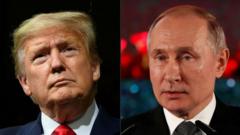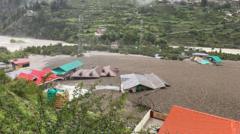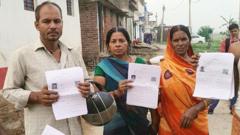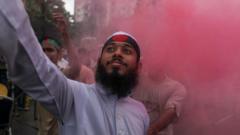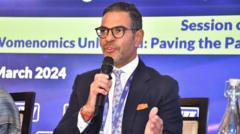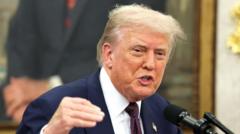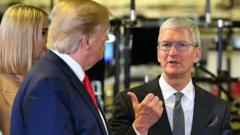The article delves into the lesser-known attempts by Indira Gandhi's regime to shift India from a parliamentary democracy to a presidential system during the Emergency, and how these ambitions shaped the country’s political landscape.
Unveiling India's Unfinished Presidential Dream: The Indira Gandhi Era
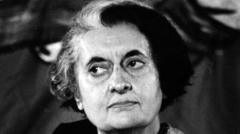
Unveiling India's Unfinished Presidential Dream: The Indira Gandhi Era
An exploration of the efforts to transition India to a presidential system during Indira Gandhi's controversial rule, highlighting key figures and proposed constitutional changes.
During the mid-1970s, amid the enforcement of Emergency under Prime Minister Indira Gandhi, India found itself in a political turmoil characterized by suspended civil rights and the imprisonment of political dissenters. This period served as a backdrop for a bold reimagining of governance, as detailed in historian Srinath Raghavan's new book, "Indira Gandhi and the Years That Transformed India."
Raghavan notes that Gandhi's inner circle began advocating for a transition to a presidential system that would consolidate power, lessen the influence of an "obstructionist" judiciary, and reduce the parliamentary process to a mere formality. The concept was partly inspired by Charles de Gaulle's France and sought to escape the limitations imposed by parliamentary democracy—a vision that remained largely unrealized.
The conversation initiated in September 1975 when BK Nehru, a prominent diplomat and a close aide to Gandhi, lauded the Emergency as a "tour de force" and suggested that now was the opportune moment to establish a directly elected president, liberated from the shackles of parliamentary reliance. Nehru believed that such a figure could implement "tough, unpopular decisions" essential for the nation's welfare.
Nehru's proposals, including a single seven-year presidential term and reduced judicial powers, found proponents within Gandhi's administration, generating a movement towards an executive-centered framework. The enthusiasm surrounding these suggestions even led some Congress leaders to entertain ideas of conferring lifetime power to Gandhi herself.
Despite initial excitement, Gandhi's stance remained ambiguous regarding a full constitutional overhaul, prompting her aides to draft a secretive proposal aimed at empowering the presidency significantly. This document suggested granting the president judicial appointment powers and establishing a "Superior Council of Judiciary" to interpret laws, shifting substantial authority away from the Supreme Court.
Although these radical reforms never solidified into formal proposals, their implications resonated with the Forty-second Amendment Act passed in 1976, which broadened Parliament's powers, restricted judicial review, and centralized executive authority. This amendment initiated a shift in the constitutional balance that gradually favored parliamentary supremacy and garnered scrutiny from various quarters, including the media.
As Gandhi's tenure progressed, her inner circle intensified calls for a dramatic constitutional restructuring, culminating in the passage of the controversial amendment by December 1976. Subsequent events reversed some of its more authoritarian measures after her electoral defeat in 1977, reasserting democratic checks and balances.
Interestingly, shortly after returning to power in 1980, discussions surrounding presidential governance resurfaced within Congress, particularly following President Sanjiva Reddy's departure in 1982. Gandhi contemplated transitioning to the presidency herself but ultimately appointed a loyalist to the role instead, a move reflective of her tactical political maneuvering.
The notion of a presidential system remained an undercurrent in Indian politics even into the mid-1980s, incited by calls from various ministers. However, the assassination of Indira Gandhi later that year abruptly stifled discussions on a potential shift in governance. India, thus, upheld its parliamentary framework, highlighting the complexities of its political evolution during a tumultuous era.
In conclusion, while ambitions of a presidential system surfaced and were discussed, they never gained widespread traction, raising questions about leadership intentions and national sentiments regarding substantial political reform in India.


